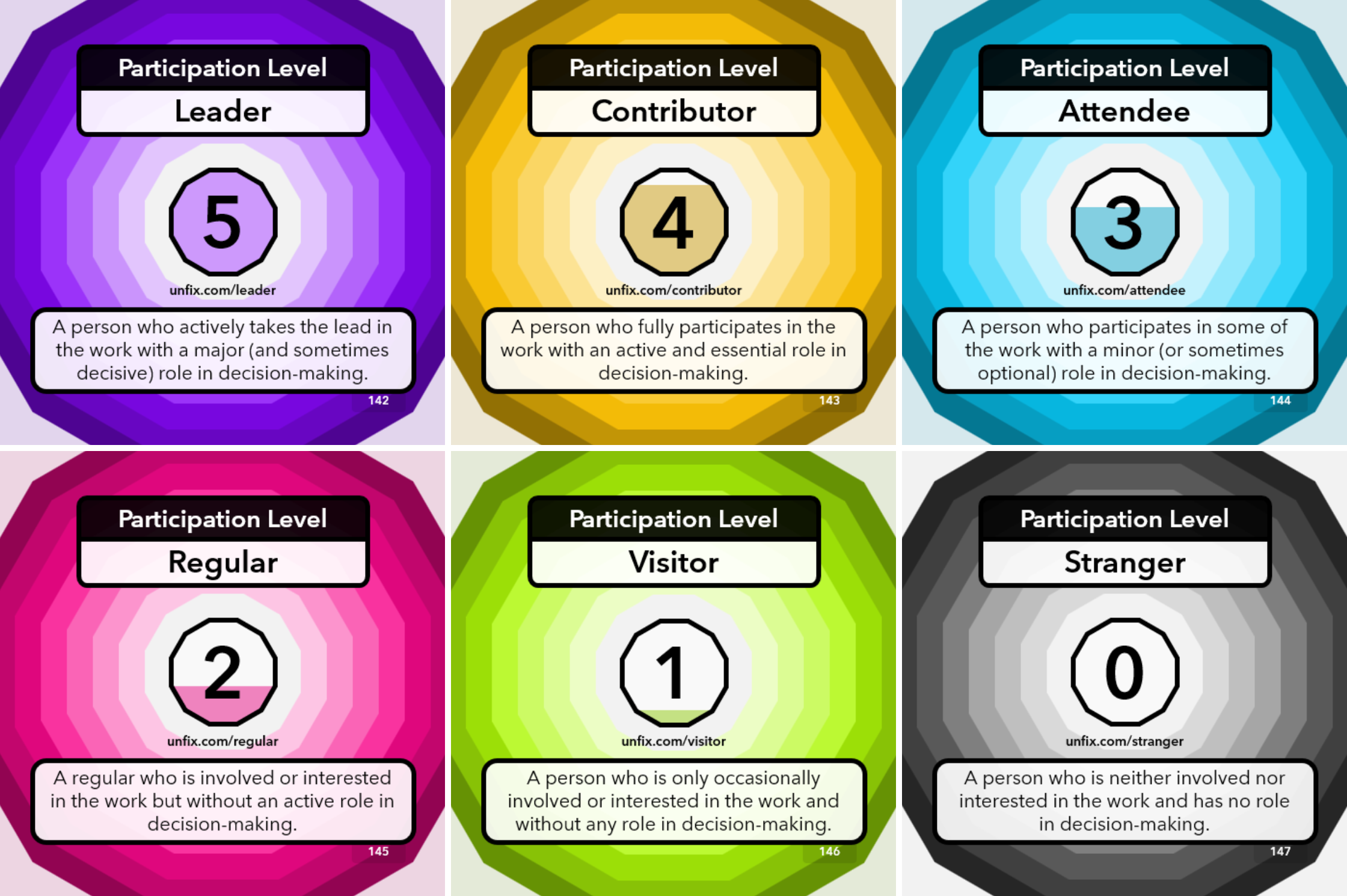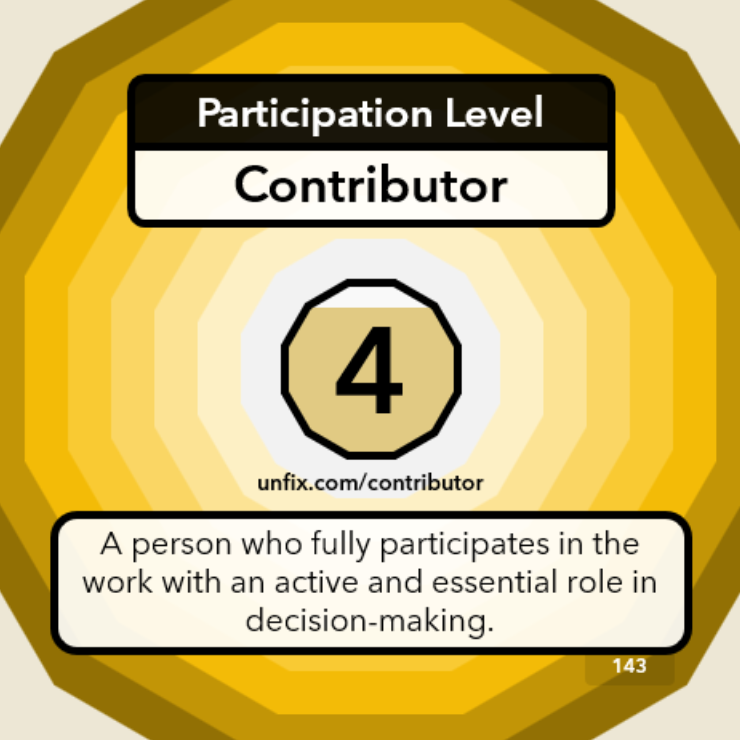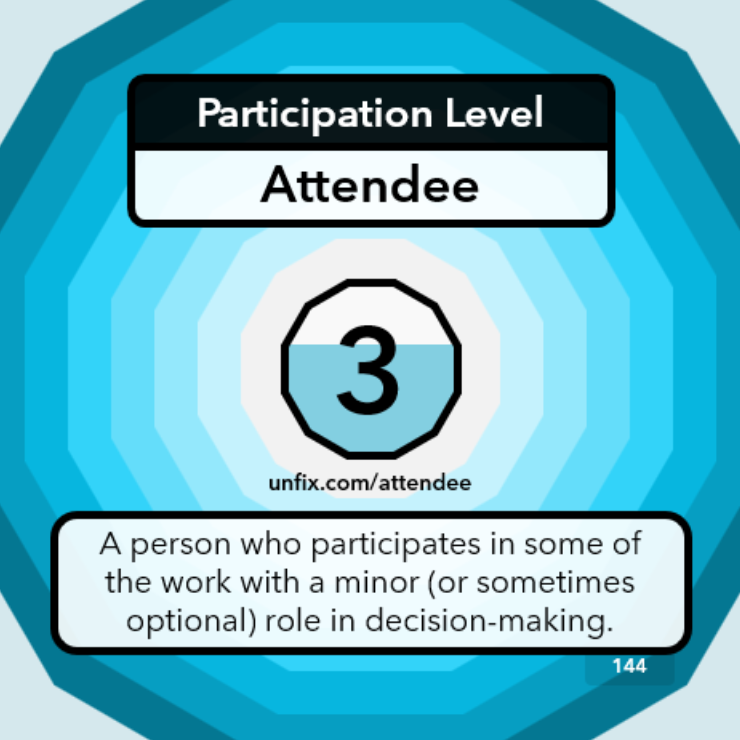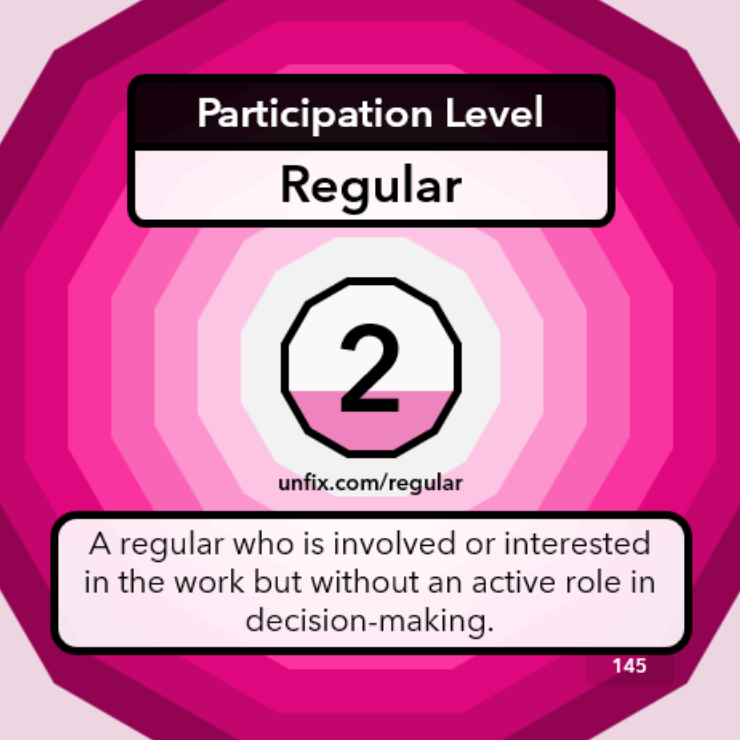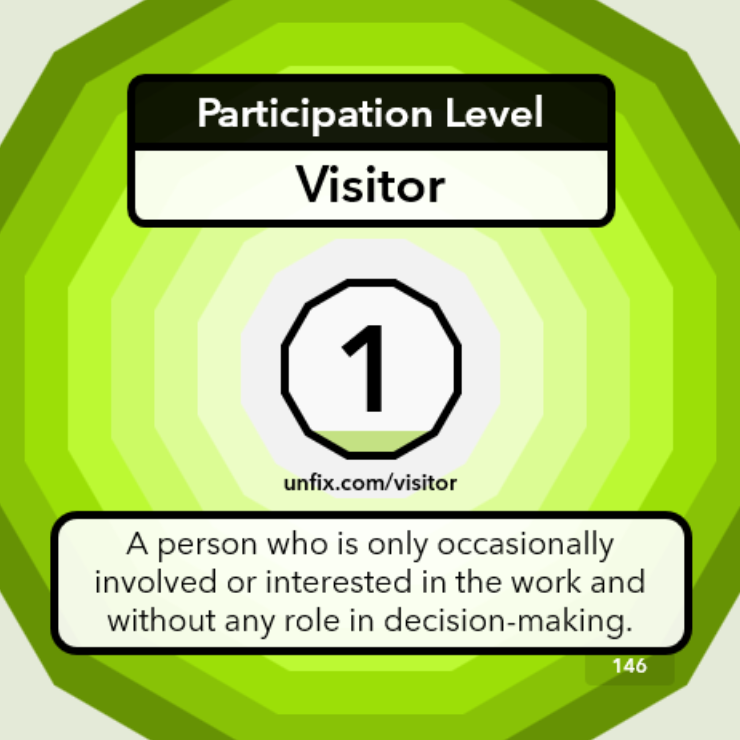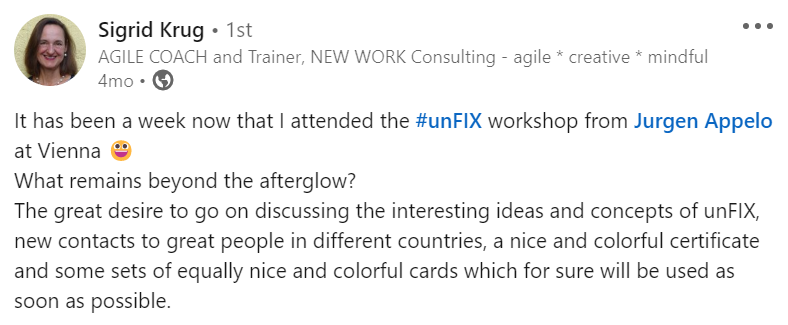
Participation Levels
Purpose
Which people are pulling the cart? Who is just occasionally visiting? Whose attendance is crucial when making decisions? And who just needs to be informed about the outcomes? Teams can use the six Participation Level patterns to indicate their level of involvement.
Annotating team descriptions with a Participation Level per person may help set expectations around attendance and decision-making. This is especially relevant when people are involved in multiple Crews or Forums.
You may combine the patterns in this set with Delegation Levels, Time Commitments, and/or Role Attributes to create a unique visualization of people’s contributions in various contexts.
Notes
Some people might have difficulty understanding the difference between Time Commitments and Participation Levels. This can be explained as follows:
We can imagine a crisis manager who is only available temporarily team as a Leader to make fast, important decisions with a self-organizing crisis team (Participation Level 5), but their Time Commitment is unpredictable and thus Intermittent.
We can imagine a professional secretary who attends all team meetings as a Scribe to help the team with meeting notes and documentation but does not participate themselves in the decisions (Regular, Participation Level 2). And their Time Commitment would be Fixed.
The combinations people can make with Participation Levels, Role Attributes, Time Commitments (and also Delegation Levels) are almost endless.
Captains in Crews and Chairs in Forums typically operate at the Leader level, but exceptions are possible.


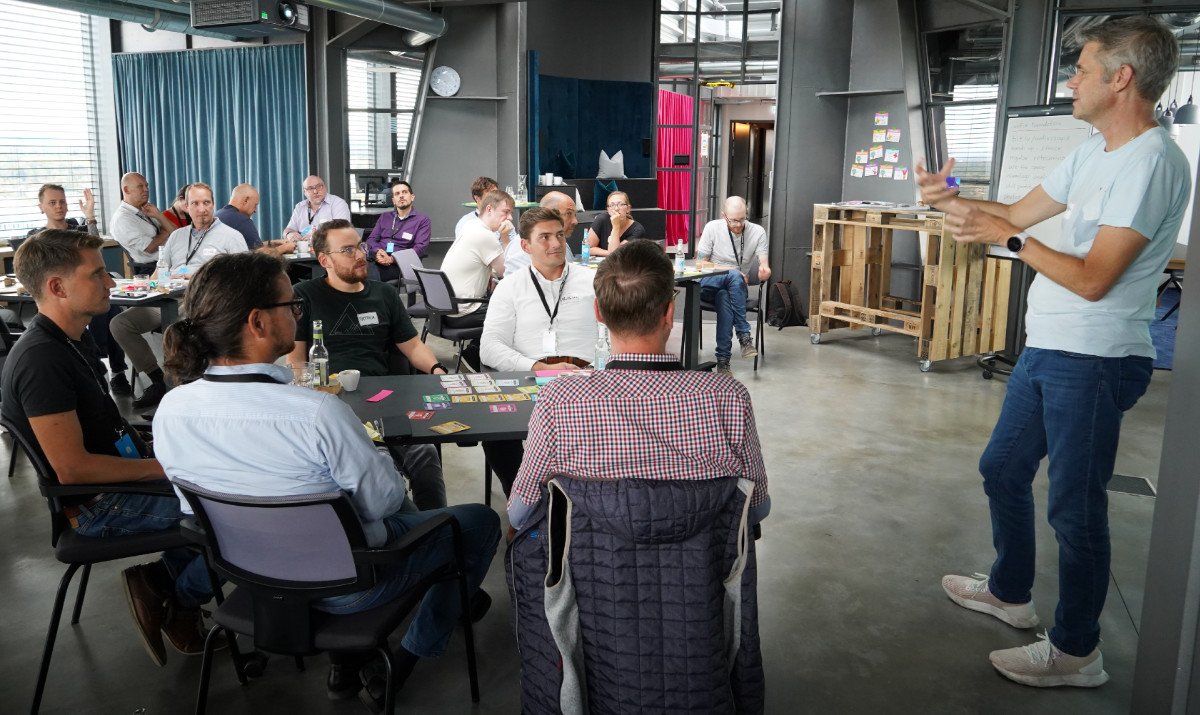

“When you try to be everything to everyone, you accomplish being nothing to anyone.”
(Source: “Can a Tool Be Complete?”)

